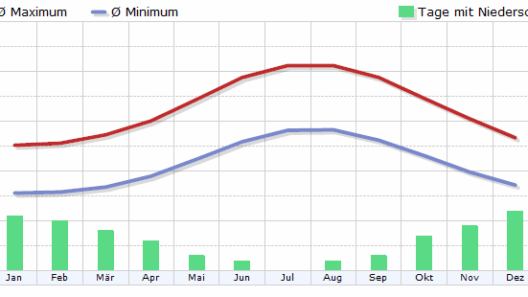The Great Plains region, often colloquially referred to as the “breadbasket of America,” possesses a distinctive climate that has evolved into a defining characteristic of the area. Stretching across several states, including parts of Montana, Wyoming, Colorado, Nebraska, Kansas, Oklahoma, and Texas, the Great Plains exhibit a range of climatic conditions, shaped by geographical features and atmospheric patterns.
At the heart of the Great Plains climate lies its semi-arid nature. This climate is predominantly characterized by its temperate conditions, exhibiting a significant temperature differential between summer and winter. With summer temperatures soaring into the 90s Fahrenheit (32-37°C) and winter lows plunging into negative digits, the Great Plains often experiences extremes that can be both exhilarating and harsh. The flat topography, combined with prevailing winds, facilitates rapid temperature changes, making it imperative for both residents and wildlife to acclimate to this variability.
The region’s precipitation patterns further accentuate its unique climate. The annual rainfall across the Great Plains averages between 15 to 30 inches, heavily dependent on the specific locale, with the easternmost parts generally receiving more precipitation than the western fringes. This disparity creates a contrast between the lush, verdant landscapes of eastern Kansas and the arid, sagebrush-dominated terrain found in the west. Precipitation primarily occurs during late spring and summer months, coinciding with the growing season and allowing for agricultural productivity.
Wind is a defining feature of the Great Plains climate. The area’s expansive, unobstructed landmass allows for the unimpeded flow of air, generating strong winds that contribute to the region’s “windswept” moniker. The prevailing winds from the west often collide with warm, moist air from the Gulf of Mexico, resulting in thunderstorms and even tornadoes, particularly during the spring months. These severe weather phenomena are not only fascinating but hazardous, necessitating preparedness among residents.
Within this climatic framework, different ecological zones emerge, each adapting to the prevailing conditions. The eastern Great Plains, thanks to higher rainfall, support lush grasslands and fertile soil—ideal for farming and extensive agriculture. As one moves west, the vegetation gradually alters from grasses to shrubs, with regional flora adapting to the increasingly arid conditions. The unique ecosystems that arise from these climatic variations support a diverse array of wildlife, including pronghorns, bison, and various bird species that thrive in these open habitats.
The so-called “Tornado Alley,” encompassing parts of the Great Plains, is another critical aspect of its climate. This region is notorious for its frequent tornado activity, resulting from the convergence of warm, moist air from the Gulf of Mexico with cold, dry air descending from the Rocky Mountains. These tornadoes can produce extreme winds, creating destruction but also shaping the landscape over time. Residents have developed a culture of resilience, marked by rigorous storm preparedness protocols.
The Great Plains climate bears witness to the implications of climate change, which poses severe challenges. Historical data indicates that temperatures across the region are rising, with alterations in precipitation patterns becoming increasingly apparent. These changes threaten the agricultural practices vital to the regional economy, impacting crop yields and water supply. Droughts have become more frequent, challenging farmers to adapt their practices in response to dwindling resources. Ensuring sustainable farming practices and investing in water conservation mechanisms are imperative in addressing these challenges.
In recent years, there has been a growing focus on ecological restoration initiatives in the Great Plains. These efforts aim to rejuvenate prairies and grasslands that have been depleted due to agricultural expansion and urban development. By promoting biodiversity and reviving native species, these projects not only enhance habitat quality for wildlife but also improve carbon sequestration capabilities, contributing to the fight against climate change.
As an area renowned for both its natural beauty and agricultural bounty, the Great Plains region calls attention to the delicate interrelationships between climate, agriculture, and ecology. Understanding the specifics of its climate is essential for future planning and sustainable development strategies. Monitoring long-term climate trends, implementing eco-friendly land management practices, and fostering community education will play pivotal roles in ensuring that this iconic landscape remains resilient in the face of climate adversity.
In conclusion, the Great Plains region exemplifies the marvels and challenges of a windswept climate. Its wide-open skies and tumultuous weather patterns create a dynamic environment that is as beautiful as it is complex. By safeguarding the ecological integrity of the Great Plains, we pave the way for future generations to appreciate and draw sustenance from this remarkable landscape. As we face a shifting climate, continuous vigilance and proactive measures will be vital for the preservation of the Great Plains’ unique identity.








